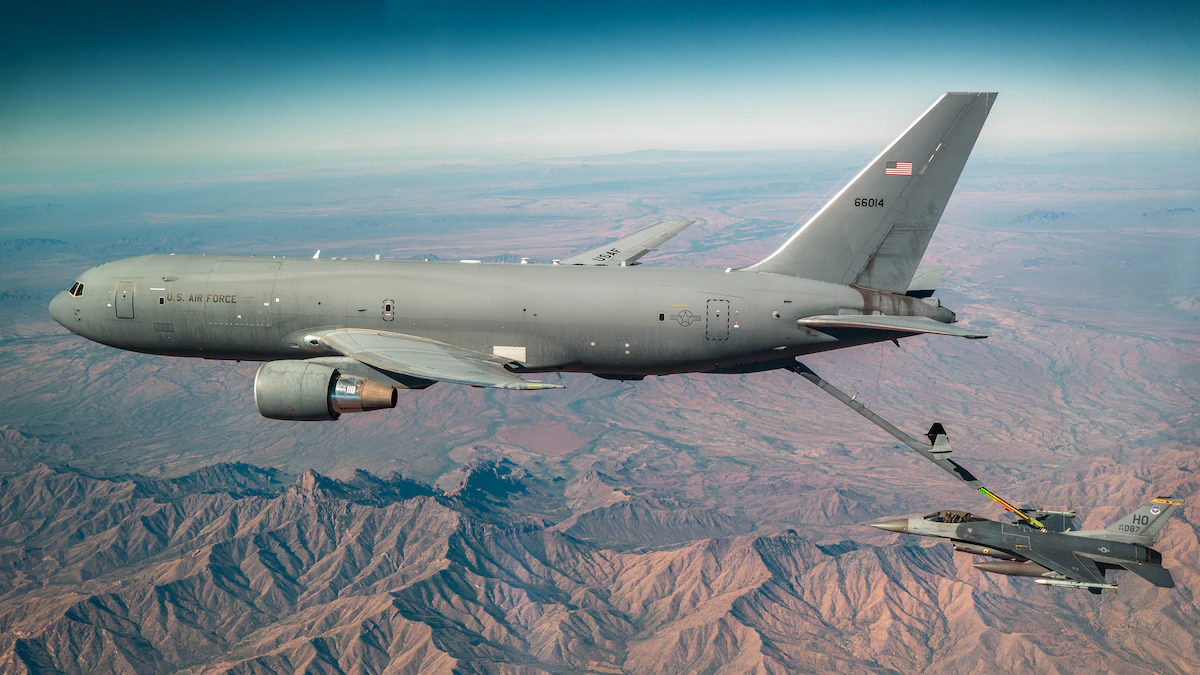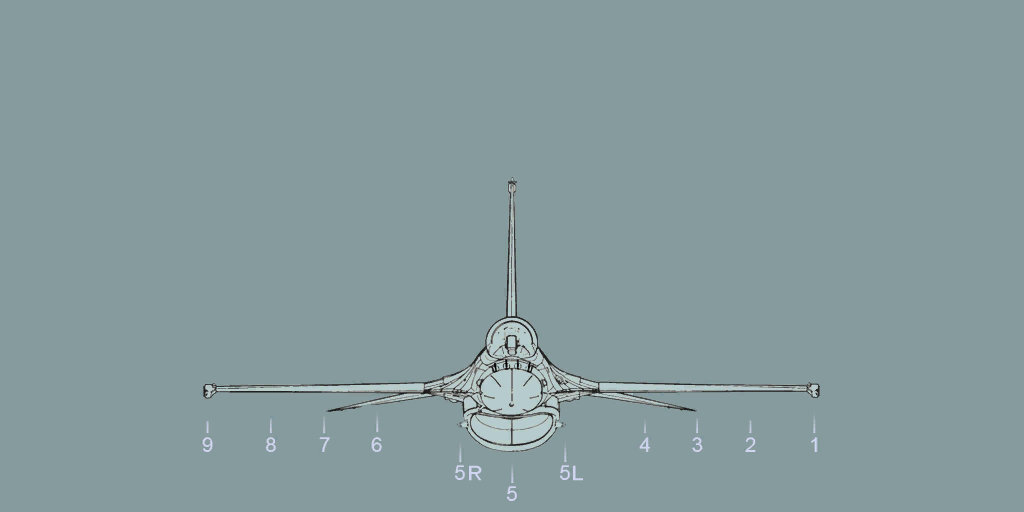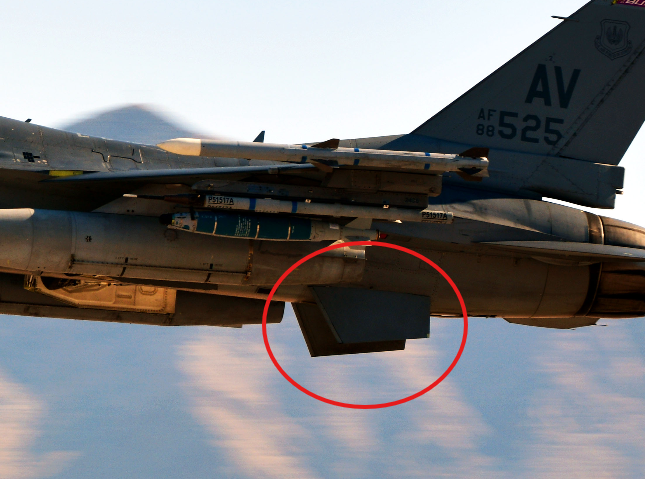F-16 Aircraft Specifications
The F-16 Fighting Falcon

The F-16 is a versatile fighter jet known for its speed, agility, and advanced avionics. It boasts a powerful thrust-to-weight ratio making it capable of superior performance in various mission profiles.
Engine Specifications
The F-16 is powered by either the Pratt & Whitney F100-PW-229 or the General Electric F110-GE-129 turbofan engines. It reaches speeds over 1500 mph (Mach 2.0) and can operate at altitudes of up to 50,000 feet.

Armament
The F-16 comes equipped with a 20mm M61A1 Vulcan six-barrel gun that can fire up to 6,000 rounds per minute. It can carry a variety of air-to-air and air-to-ground munitions including missiles like the AIM-120 and AIM-9.
Technical Features
1 (Pitot Tube)
>This is mounted off the front of the aircraft and measures the airspeed (pronounced PEE-toh).
2 (Radar)
>The F-16s AN/APG-66 radar is contained within the nose-cone of the F-16, providing radar coverage in front of the aircraft.

3 (Refueling Door)
>The refueling door is placed on the top of the aircraft behind the canopy for aerial refueling on long missions or when there is not time to land. The F-16 has an onboard fuel capacity of 7,000lbs and up to 12,000lbs with external tanks.
 U.S. Air Force photo by Airman 1st Class Mason Hargrove
U.S. Air Force photo by Airman 1st Class Mason Hargrove
4 (Flaperons)
>These flight control surfaces control the roll & pitch of the aircraft and also double as flaps.
5 (Engine Air Intake)
>The large engine of the F-16 needs a lot of air to produce high thrust. The large air intake off the bottom of the fuselage provides that air.
6 (Wing Mounted Missile Launcher)
>
This is a LAU (Missile Launcher Rail) permanently mounted at the end of the wing (points 9 & 1) that can launch AIM-9 Sidewinder missiles or AIM-120 AMRAAM missiles (points 9, 8, 7, 3, 2, & 1). Additionally, the F-16 has 7 more hard points to mount armaments and fuel.
For more detailed information visit the Kleine-Brogel Air Base Website Armament data from Wikipedia7 (Gear)
>The landing gear of the F-16, as with all Air Force aircraft, are light. This allows for them to not weigh the aircraft down too much, but makes them more delicate in comparison to the gear of Navy aircraft such as the F-18 Hornet.
8 (Ventral Fins)
>The ventral fins stick out below the F-16 on either side behind the landing gear to provide more stable flight by reducing the yaw of the aircraft.

9 (Countermeasure Dispensers)
>Countermeasures (chaff & flare) are dispensed from square doors behind the wing.
 U.S. Air Force photo/Staff Sgt. Brian J. Valencia
U.S. Air Force photo/Staff Sgt. Brian J. Valencia
10 (Engine Actuator Nozzle "Turkey Feathers")
>The engine actuator nozzle (also referred to as turkey feathers) contracts and extends to change the size of the engine opening, making a very distinctive noise (this noise only occurs on the P&W engines).
Original Video Original Video